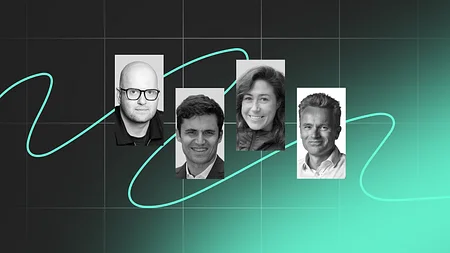Digital Transformation: The Great Lie – Part 2. How do you know if you’re on track?
A three-part series by 11:FS Non-Executive Director, Lisa Gansky
Last week Lisa discussed how becoming truly digital requires a leap of faith, to boldly go where no one else has yet gone, even if it seems crazy at the time, and to ignore basic human instinct asking how? where? how long? how far?
She outlined the three steps on the journey:
- The Digital Makeover – ask never ending questions if you want to evolve
- The Joy of Decoupling – refashioning process and perspective
- Is That Even Legal? – Innovation that completely redefines norms
Read part 1 in full here
Part 2 - How do you know if you're on track?
Technology today allows for the storage, sharing, and appreciation of digital photographs, videos, music and payments. But here’s the rub. Decoupling the business model value from the physical product, (be that a CD or a bank branch), suddenly unlocks a whole other level of potential, including a new value chain. Sharing music by relying on “the cloud” for vital services, or navigating your day by transportation that is out of your control, demands a level of trust in the offer, ecosystem and the company who make these once fiercely outlandish promises.True innovation is neither predictable nor comfortable.Be bold, be curious This type of innovation is almost always viewed as absurd at first. People will either assume you don’t really understand the business or that you’re out of touch with “how things around here really happen.” If you receive that kind of reaction, take it as a sign that you’re pointed in the right direction. True innovation is neither predictable nor comfortable; it’s the result of a wholehearted journey driven by curiosity and openness. Curiosity — the courage to ask bold questions and continue to understand what is newly possible that wasn’t before — points to where high value, emerging opportunities lie. Make a mess True innovation is relentless and iterative, and, face it, it’s a messy business. You can tidy up after the fact, but the mess is inherent and a welcome part of the process. The key here is to be more committed to bold and unsettling questions than to any one answer or outcome, at least for a while. Ideas and teams that sustain move to the next round of funding and development. These ring-fenced proof-of-concepts generate massive learning even if none turn into the future of your business. In other words, there are at least two things happening at once. Firstly, culturally, team members realize that experiments and fast learning is highly prized; and secondly, new models, markets and potential partners are duly cared for.
“The key here is to be more committed to bold and unsettling questions than to any one answer or outcome, at least for a while.”Snuggle up to entrepreneurs We are shifting from last century’s paradigm where value was found in a brilliant solution, to one where the value is in perpetually unraveling big, prickly, bad-ass questions. If you trust the process and follow each question, you'll open doors to a cascade of evermore interesting questions, and networks of people who provoke your collective thinking even further. Entrepreneurs are notoriously scouting and creating future breakage. So, stay close! Shake up not only business models but internal systems Many of us are already dependent on the ideas that seemed bizarre less than five years ago. Looking forward, and squinting, it is not only business models that need to be rethought. What we consider to be a company or organization must be shaken and stirred. Complex systems and networks re-organize in nature seamlessly and rapidly driven by data encoded, then shared by pheromones or enzymes. Think about when you cut your finger with a knife, your body’s immune system defends your future health. This dance of sudden, desirable collisions demonstrates a kind of organizational adaptability that you will soon aspire to.
"What we consider to be a company or organization must be shaken and stirred."One bee or one ant does not convey the power and resilience of the swarm or colony. These undulating associations foreshadow how teams work – engaging, retreating, reconnecting and learning. The shift from top-down hierarchal organizations to self-organizing, temporal structures is magnificent, massive and challenges all the notions of management of the past 60 years. Reflecting on teams I’ve worked closely with, it does appear that the organizational structure of a top-down hierarchy personifies a team’s governance not how work actually happens. Who you report to and how you get stuff done share little common ground. For decades, we’ve optimized for control over innovation in favor of scale and profit. Being slow to adapt carries a hefty price. True transformation is so much more than a "project" In my work with large companies whose core business model is five years old or more, they talk about and seek transformation which I view as systemic innovation, but giant established companies tend to view it as a project. Truly innovative ideas, brands and cultures live with the understanding that pathological curiosity is your best low-risk, high-value insurance for the future. This so called transformation is most certainly not a project. The recipe for a project is first to pretend to know what’s needed and where the journey will end. Suppose that the data available to you from your customers turns out to be your most valuable asset? How will your business change when all of your customers have a phone with GPS, a camera, a digital identity and bank account all tightly linked? Could you have predicted the speed or impact of autonomous vehicles? Mobile banking? Refrigeration?
"Truly innovative ideas, brands and cultures live with the understanding that pathological curiosity is your best low-risk, high-value insurance for the future."Drive change by imagining the previously unimaginable This type of journey to transformation involves asking absurd and wide-angle questions without any immediate answer in sight. A good practice for this type of mental trek is to expand your experience base by doing something you’re entirely uncomfortable with, and then imagining a future you couldn’t see until ... just now. Next week: Part 3 - The future is a moving target Lisa Gansky is a thought leader, speaker, investor, entrepreneur and founder of Mesh Ventures and Instigating+co, and best-selling author of The Mesh: Why the Future of Business is Sharing. She has also recently joined the board of 11:FS.




